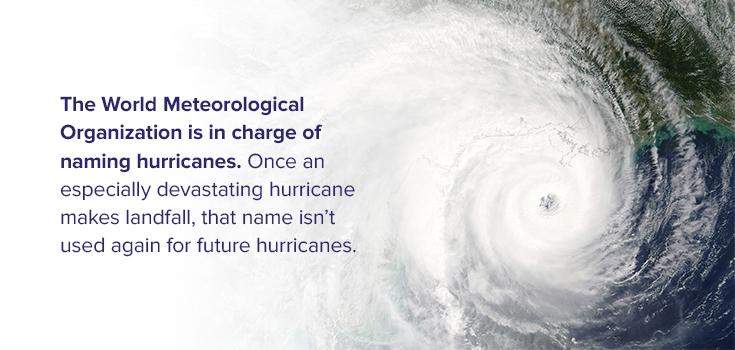Hurricanes are storms that can have winds up to 200 mph and last a week, in part because they get energy by passing over warm waters in the ocean. Hurricanes move in circles around the “eye” of the storm. Once they make landfall, hurricanes can be life-threatening and can cause damage to homes, cars, buildings and roads.
Teaching kids about hurricanes doesn’t have to mean reading from a book or lecturing. Hurricanes are such an interesting topic that it’s easy to create interactive lessons that keep students engaged and learning!

Interesting Facts About Hurricanes for Kids
Hurricanes are endlessly fascinating, so you can start by sharing facts. You can post these on cards or write them around the classroom:
- The calmest part of a hurricane is the “eye” of the storm.
- Hurricanes move clockwise in the Southern Hemisphere but counterclockwise in the Northern Hemisphere!
- The World Meteorological Organization is in charge of naming hurricanes. Once an especially devastating hurricane makes landfall, that name isn’t used again for future hurricanes.
- Hurricane hunters working for NOAA (National Oceanic and Atmospheric Administration) fly through hurricanes to gather information about the storms so they can keep those on land safe.
- Hurricanes are rated on the Saffir-Simpson Hurricane Scale from one (storms expected to cause minimal damage) to five (storms expected to cause enormous damage).
- In the past 200 years, about two million people have died from hurricanes all over the world.
Activities and Hurricane Experiment for Kids
Activities and experiments can help students understand more about hurricanes and even how to stay safer when a storm hits. Try these activities with your class:
- Create a hurricane: Pour some water in a big bowl. Have a student stir the water with a spoon quickly, until the water is moving fast. Carefully drop a few drops of food coloring in the center of the water and watch how the color swirls. This is the way wind and water in a hurricane moves around the eyes of the storm. NOAA also has online games that let you experiment with a hurricane virtually.
- Experiment with air pressure: On a plate, place a bit of clay and place a small candle in the middle of the clay. Fill a cup with water and add a few drops of blue food coloring. Pour the water into the bottom of the plate and light the candle. Place a tall glass over the candle, on the plate. You will see the water start to rise and the candle go out. This can be a great way to explain how the low air pressure in the center of a hurricane causes the water levels to rise.
- Create a classroom weather station: Let kids create a rain gauge out of a bottle and a weather vane. Add in a barometer and thermometer and kids will have a simple anemometer to measure wind speed by attaching pieces of paper streamer to a stick. Note the weather conditions and create a weather report. Indoors, take out a world map and track a hurricane from last year. Have students write their own hurricane watch and hurricane warnings. What information does the public need to know?
- Get ready!: Have students create hurricane-readiness plans for their own lives. Where are the safest places in town? What should they pack in an emergency kit? Have children paint or draw what goes into their kits and write out their plan. Create a safety plan for your classroom together. Then, have one student play the role of a meteorologist who reads out an alert so everyone can practice their safety plan.
Learn More Today
For students who want to learn more, Science Explorers is a science company dedicated to making learning fun. Take a look at our STEM summer camps or our after-school clubs for more opportunities to engage with science!

